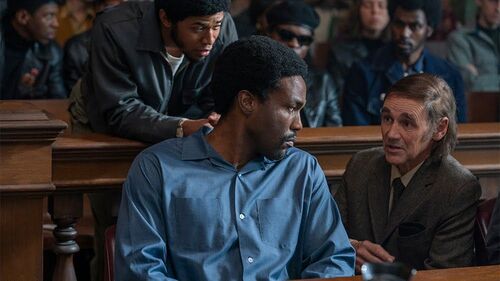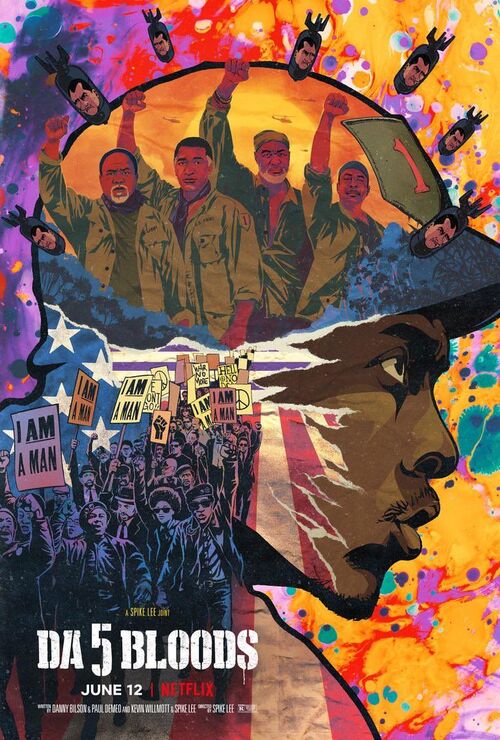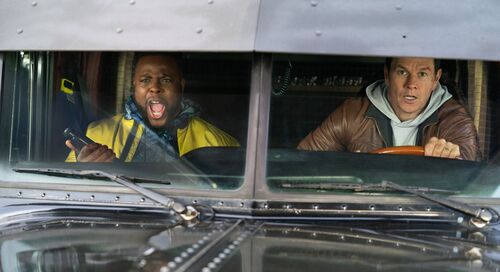
Batman: Mask of the Phantasm
 Did the world go comatose on how great is, or am I just astounded this animated film I watched countless times as a child is actually the most compelling Batman story? Mask of the Phantasm is directed by Eric Radomski and Bruce Timm, the minds behind the iconic '90s animated series. The writing team was also well immersed in the animated series with a story from Alan Burnett. Despite its roots, even as a child, I could tell Mask of the Phantasm was not bound by the shackles of TV, much more a children’s programme.
Did the world go comatose on how great is, or am I just astounded this animated film I watched countless times as a child is actually the most compelling Batman story? Mask of the Phantasm is directed by Eric Radomski and Bruce Timm, the minds behind the iconic '90s animated series. The writing team was also well immersed in the animated series with a story from Alan Burnett. Despite its roots, even as a child, I could tell Mask of the Phantasm was not bound by the shackles of TV, much more a children’s programme.
I saw Batman bleed for the first time in Mask of the Phantasm. I felt him in distress. It’s very dark and gets pretty violent, by modern PG 13 standards. Also taking into account the story anchored on flashbacks, this film was never envisioned for child consumption. This is compounded by complex themes toying with love, duty and the classic moral spectrum this icon character toes. Mask of the Phantasm is story dissected with deft juxtaposition and is done on a canvas contemporary film audiences are quite familiar with – the idea of a hero, especially one as brooding and tortured as Batman/Bruce Wayne, considering a normal life with a girl he loves.
The difference here is Bruce really isn’t Batman yet. The first flashback, spanning 10 years, introduces us to the girl, Andrea Beaumont, who Bruce meets at the cemetery where his parents are buried. Bruce hints at the vow of justice and vengeance he has made to his parents but doubt seeps in as he grows closer to Andrea and he starts to dream of a normal life for himself. In one of the most moving Batman scenes in film, Bruce evokes Jesus in the Garden of Gethsemane as he sheds tears and battles the guilt borne of the happiness creeping into his life. “I didn’t count on being happy,” Bruce says, as he begs for some easement from the spectre of his parents.
But Bruce’s portion is one of tragedy and heartbreak. Soon after he proposes marriage to Andrea, she and her father have to flee to Europe after the latter makes some disastrous financial decisions. This would be the final blow that pushes Bruce towards his terrifying rebirth as the Dark Knight. This is such an emotional thread eliciting more sympathy for Bruce. The murder of his parents is conventionally angled as the most pivotal moment for Batman, rightfully so. But there is a sense of fate about the whole thing; the sense that darkness adopted Bruce, bearing in mind the fact this is all a flashback and we know Batman will throw on the cape and cowl.
Bruce’s lack of happiness and eventual path is a function of the dark and eroding world he lives in. Life was never going to get rosier. Villains from the past have evolved from regular mobsters to maniacal anarchic fiends. This idea is encapsulated in the Gotham World of Tomorrow fair Bruce visits with Andrea, which is full of life and promise with so much love in the air. In the present day, this fair is run down, rusting and abandoned by all, save for Joker, who is at home with this vision of an eroded world – he has always wanted to see the world burn.
Like the Batman animated series, Mark Hamill lends his voice talents to the Joker giving the expected verve, colour and morbidly comical sensibilities. But the main antagonist, it could be argued, is a projection of Batman himself, a version of the Dark Knight that completely lost the battle to save his soul. The mysterious Phantasm emerges and begins to start taking out some gangsters and Batman always seems to be on the periphery of the murders, like he’s watching a vision of himself.
Owing to the similarities between Batman and the Phantasm, the police inevitably turn their eyes towards Batman. Batman does not kill, the loyal Commissioner Gordon says, as he washes his hands off the intense bat-hunt about to ensue championed by a conceited councilman. In between all this, the Caped Crusader is justifying his tag as the world’s greatest detective and does some detecting as he looks to uncover the face behind the mask of the Phantasm.
There is something dreamlike about the animation crafting Gotham’s gothic architecture, accentuated by the ominous orchestral score enforcing a certain noir feel. The film also seems to be set in the ‘50s or ‘60s, ripe for the noir sensibilities.
The story is certainly the strongest element of this film but there are some noteworthy set pieces. The Joker is the conduit of some campy elements; like his decision to use a piece of baloney to defend himself in a fight and his time playing giant with Batman as they battle in a model of Gotham City. As a child, my favourite sequence in this film saw Bruce take down a thug off of a moving motorcycle, eliciting numerous short rewinds. Some 15 years down the line, I can’t say much changed.
One of the main reasons Mask of the Phantasm flew under the radar at the time of its release in 1993 was the marketing which made it feel like a mundane straight-to-video release. But this film is anything but and has since grown to develop a cult following and rightfully so. It’s a lean nuanced cohesive story, running at 75 minutes, and it sinks its teeth in the person of its subject like few Batman films have done since. Mask of the Phantasm delivers because of its impressive conviction and clarity leaving you in no doubt we are admiring a canvas meant to depict a compelling tragedy.
-


